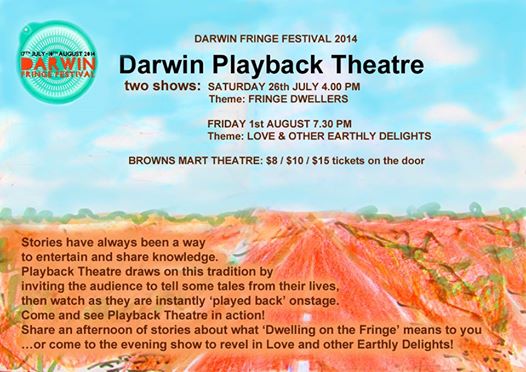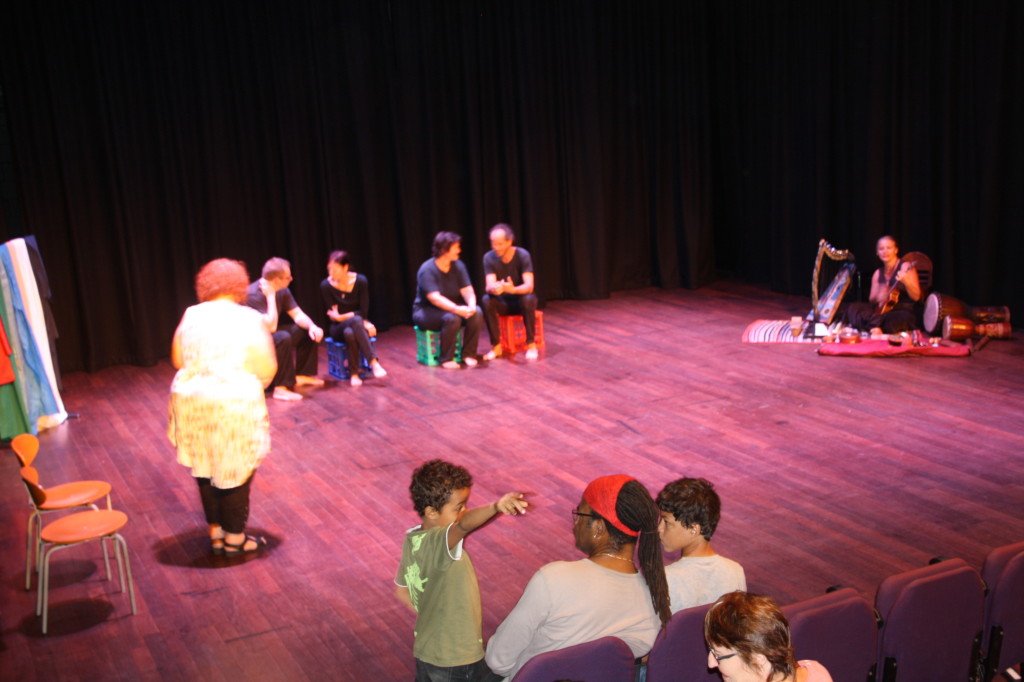In February, I was fortunate to hear about some Playback Workshops designed to introduce new and old improvisational actors to the art of PlayBack Theatre. My motivation for attending was personal. I wanted a creative outlet for the rollercoaster of emotions I was carrying from my work. It was all about me and my needs. If there was some way of expressing the tension that had built up over the past 5 years from listening to other people’s stories of trauma and abuse, in a fun and releasing kind of way, then this was enough. I didn’t really know what I was in for. I didn’t realise I would be the vehicle through which I would hear more potentially traumatic stories and have to literally jump into the storytellers shoes in a physical way. I didn’t realise how much courage I would need to muster to expose the introspective parts of my vulnerable self, while the self critic tried to talk me out of it. That is the journey I am now on.
Jonathan Fox introduced Playback Theatre in 1972 as a vehicle for ordinary people to act out the stories of their community. Although not intentionally a therapy, drama therapists and psychodramatists recognised Playback’s potential as a therapeutic approach. “It is theatre with the power and intention to heal and transform individuals and social groups” (Salas 2009). It has been used with trauma survivors, couples and families, adolescents, people in recovery from addictions or mental illness and other groups.
So how does it work? Well, the stage is set with two chairs to one side for the Conductor and Teller (a volunteer from the audience who is invited to share a story). In the middle of the stage are four boxes (seating and potential props) for four Actors. To the other side, a musician is accompanied by a wide variety of instruments to add musical content to the story. And upstage is a rack of cloth of various colours, for use as costumes or props. The Conductor invites a volunteer from the audience to tell a story. This Teller chooses an Actor to play themselves and for any other key figures in the story. The Actors listen as the Conductor interviews the Teller about the details of the story and most importantly, what emotions were present at the time of the event. The conductor invites the Teller and audience to “Let’s Watch” as the Actors and Musician play back the story as creatively and accurately as they can. The Actors finish their final scene by pausing and looking back at the Teller, anticipating their feedback. If the Teller is troubled by the way their story ends, there is an opportunity for Transformation, as the Conductor invites the Teller to imagine a new outcome and the Actors play back this preferred ending.
The potential healing effects for Tellers may seem obvious but when played out in front of a group of strangers in public, take on a life all of their own. There is the personal sense of affirmation and validation as they tell, hear and watch stories that are significant for them; the feeling of being fully heard and understood by the Actors and through the clapping of the audience; a sense of mastery over an experience that has been hanging around in the background for some time; new insight gained into an issue that has been presented back in a new and creative way; and the cathartic experience of joining in laughter or tears with the audience.
In the short time I have been practising the skills and art of Playback, I have been struck by the potential healing effects for Actors too. In my paid work as a counsellor, my attentive, listening ear was the only tool I could use to acknowledge and validate a story of trauma. With Playback, I can use my whole body, mind and voice in acknowledgement of the courage shown for sharing a personal story amidst strangers. It feels like presenting their story as a gift bound in a bright coloured ribbon, which is unwrapped with gentle curiosity, utter delight or immense relief and profound insight.
To date, I have only witnessed this amongst the cosy and comfortable confines of my PlayBack colleagues, where we share our inner-most personal stories with each other. My inner self critic has successfully sobataged any attempt I might make to step onto the public stage. But that is a story for another time; perhaps the PlayBack stage? I’ve certainly achieved more than I imaged when I set out on this creative adventure six months ago. Any vicarious trauma or pent up frustrations I carry about the state of the world is unleashed amongst the laughter, silliness and security of my fellow Actors each week during Practice. Playback presents an abundance of other healing opportunities for Actors most of which I’m yet to experience, if I can pluck up the courage to go public.
If this article has inspired you to share a story of Tragic Love or other unresolved Earthly Delights, you might like to come along to our company’s next Fringe Festival performance tomorrow night. I won’t be on stage, but you can experience the healing power of Playback for yourself…..because it’s not all about me.
 References: Salas, J. (2009) ‘Playback Theatre: A Frame for Healing’ in Current Approaches in Drama Therapy, 2nd edn., edited by Johnson D. R. & Emunah R., Charles Thomas, Illinois.
References: Salas, J. (2009) ‘Playback Theatre: A Frame for Healing’ in Current Approaches in Drama Therapy, 2nd edn., edited by Johnson D. R. & Emunah R., Charles Thomas, Illinois.

